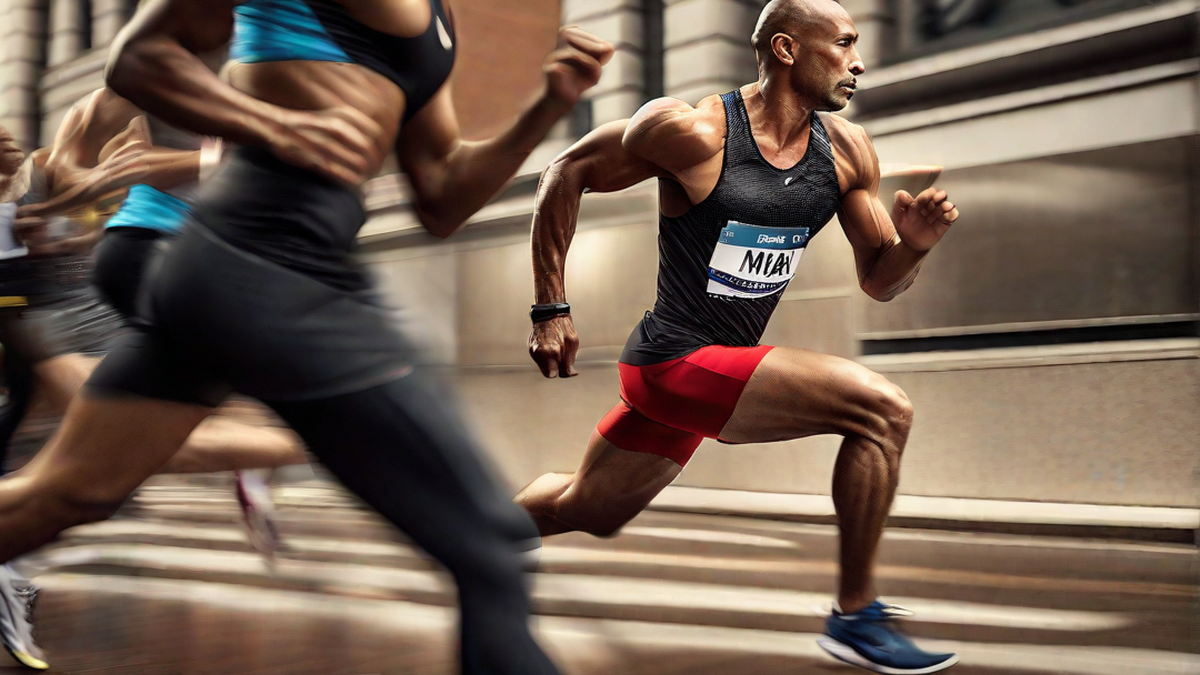When it comes to running a marathon, one of the key factors that can greatly impact performance is the type of muscle fibers in your body. As a long-distance runner myself, I have always been fascinated by the science behind endurance and the different muscle fibers that come into play. In this article, I will delve deep into the topic and explore which muscle fibers are best suited for running a marathon.
Before we dive into the specifics, it is important to understand that there are two main types of muscle fibers: slow-twitch (Type I) and fast-twitch (Type II). Slow-twitch fibers are more fatigue-resistant and are responsible for endurance activities, while fast-twitch fibers are geared towards explosive movements and power. However, it is a bit more complex than that, as there are different subtypes within each category:
Slow-Twitch (Type I) Muscle Fibers
Slow-twitch muscle fibers are characterized by their ability to sustain contractions over extended periods of time. These fibers are highly efficient in using oxygen and converting fuel sources such as fat and carbohydrates into energy. They are responsible for providing a steady, long-lasting power output, making them ideal for endurance activities like marathon running.
Within the slow-twitch category, there are two subtypes: Type Ia and Type Ib. Type Ia fibers are oxidative and rely heavily on aerobic metabolism. They have a high capacity for energy production and can sustain submaximal contractions for a prolonged duration. On the other hand, Type Ib fibers are more glycolytic and can generate energy quickly through anaerobic metabolism when needed.
Fast-Twitch (Type II) Muscle Fibers
Fast-twitch muscle fibers are further divided into Type IIa, Type IIb, and Type IIx fibers. These fibers are characterized by their ability to generate high force output in a short amount of time, making them essential for explosive movements and power-based activities like sprinting. However, they fatigue more quickly compared to slow-twitch fibers.
Type IIa fibers possess characteristics of both slow-twitch and fast-twitch fibers. They have a higher oxidative capacity compared to Type IIb and IIx fibers, making them more resistant to fatigue. This makes them useful for sustained efforts during a marathon and helps with maintaining a consistent pace.
Type IIb fibers, also known as fast-glycolytic fibers, rely heavily on anaerobic metabolism and can generate high levels of force rapidly. However, they deplete energy stores quickly and fatigue rapidly. These fibers are more suited for short bursts of intense activity rather than prolonged endurance.
Type IIx fibers are similar to Type IIb fibers but are less common in humans. They possess similar characteristics and are also better suited for short bursts of intense activity.
So, which muscle fibers are best suited for running a marathon? While both slow-twitch and fast-twitch fibers play important roles, it is the slow-twitch fibers, particularly the Type Ia fibers, that are highly advantageous for marathon running. These fibers are better equipped to handle the demands of endurance activities, allowing runners to sustain a steady pace over long distances without experiencing rapid fatigue.
While the distribution of muscle fibers is largely determined by genetics, it is important to note that training can also influence the characteristics of muscle fibers. Endurance training, such as long-distance running, can increase the proportion of slow-twitch fibers in the muscles, ultimately enhancing the body’s ability to endure prolonged efforts.
In conclusion, the best muscle fibers for running a marathon are the slow-twitch (Type I) muscle fibers, particularly the Type Ia fibers. These fibers are fatigue-resistant, highly efficient in using oxygen, and play a crucial role in providing sustained power output during endurance activities. However, it is essential to note that a well-rounded training program that incorporates both endurance and strength exercises is key to maximizing performance on race day. So lace up your running shoes, embrace the journey, and let those Type Ia fibers carry you to the finish line!

